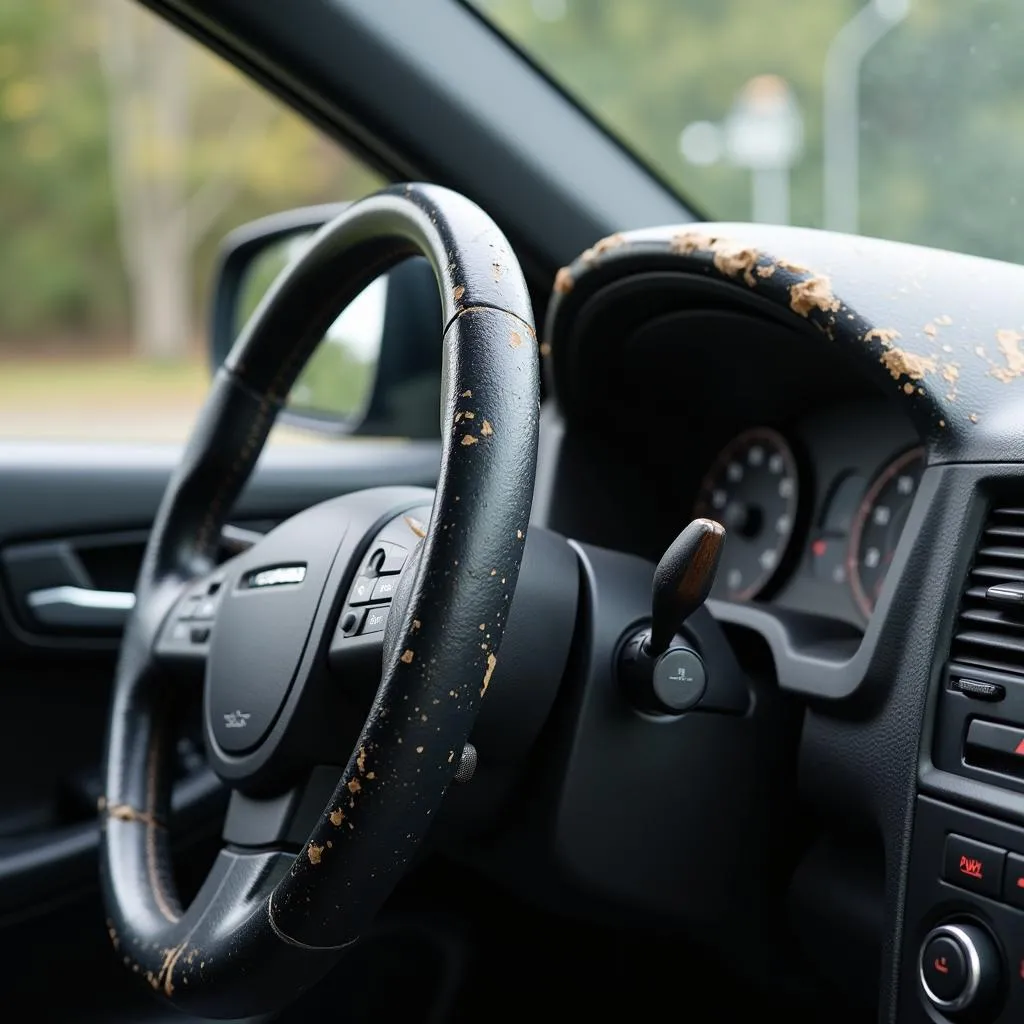Few things make a car look older than faded plastic. Whether on the dashboard, door panels, or bumpers – plastic surfaces inside the vehicle and on the exterior are exposed to environmental factors like UV radiation, heat, and cold. These can cause the plastic to fade, become brittle, and show unsightly discoloration over time.
But don’t worry: there are ways to rejuvenate faded plastic and give it new shine. In this article, you will learn the causes behind plastic fading, how to recondition faded plastic parts, and which care tips help protect the plastic in the long term.
 Example of faded car interior plastic on a dashboard
Example of faded car interior plastic on a dashboard
Why Does Car Plastic Fade?
The main cause of faded plastic is the sun’s UV radiation. High-energy UV rays attack the chemical structure of the plastic and destroy the color pigments. This causes the plastic to fade over time and lose its shine. But other factors also contribute to plastic fading:
- Heat: High heat exposure can also make plastic porous and brittle, causing it to fade faster.
- Cold: Extreme cold can also stress the plastic and make it more susceptible to fading.
- Incorrect Cleaning: Harsh cleaning agents can attack the surface of the plastic and also cause it to fade.
“Choosing the right care products is crucial to protecting plastic parts from fading in the long term,” explains Dr. Michael Wagner, a materials scientist and expert in plastics in the automotive industry.
How to Restore Faded Car Plastic
Fortunately, there are various methods to refresh faded plastic and restore its shine:
1. Cleaning: Before you begin the actual reconditioning, thoroughly clean the plastic surfaces with a mild cleaner and a microfiber cloth.
2. Plastic Care Products: Special plastic care products contain color pigments and UV filters that refresh the plastic and protect against future fading.
3. Heat Application: Another option is treatment with a heat gun. The heat can help reactivate the color pigments in the plastic, making it darker again.
4. Plastic Dyeing: For severely faded parts, re-dyeing with special plastic dye can be useful.
“For optimal results, I recommend having the restoration done by a professional car detailer,” advises Dr. Wagner. “They have the necessary expertise and the right products to treat the plastic gently and effectively.”
Tips for Caring for Car Plastic Parts
With the following tips, you can help ensure that the plastic parts in your car look beautiful and well-maintained for a long time:
- Regular Cleaning: Regularly clean the plastic surfaces with a mild cleaner and a microfiber cloth.
- UV Protection: Park your car in the shade if possible or use a windshield sunshade to reduce UV exposure inside the car.
- Suitable Care Products: Use special plastic care products with UV protection to protect the plastic from fading.
- Caution During Cleaning: Avoid harsh cleaning agents and abrasive sponges, as these can damage the plastic surface.
More Questions About Faded Plastic
- Can you paint faded plastic parts yourself?
- What home remedies help with faded plastic?
- How can I protect the plastic on my classic car from fading?
More helpful tips and information about car care can be found on our website autorepairaid.com. Please feel free to contact us if you have questions or need assistance with repairing or caring for your car. Our experts are always ready to help you!
